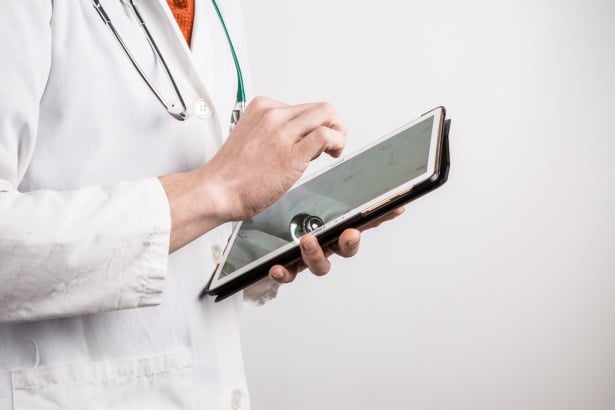What is DRaaS in Healthcare and Why Is It Important?
According to a recent study, more than 4,000 ransomware attacks occur on a daily basis. In addition to the fact that organizations pay an average ransom of $233,000, there is also a 19-day minimum downtime period following a successful attack. If you needed just a few statistics to underline what a pressing issue this has become in the modern era, let it be those.
It is also important to acknowledge that a significant portion of these attacks are all directed at the same target: the healthcare industry. Roughly $15.6 million in ransom demands plagued healthcare organizations in 2020 alone, with about $2.1 million known to have been paid to those attackers. All told, experts identified 270 healthcare-related ransomware attacks that took place between 2016 and 2020—an unfortunate trend that shows no signs of slowing down anytime soon.

That is why DRaaS is so important. Commonly referred to as “Disaster Recovery as a Service,” DRaaS brings with it a host of different benefits—all at a critically important time.
The Power of DRaaS: Breaking Things Down
A few of the factors that have always made protection difficult in the healthcare industry have to do with a combination of a high need for compliance by regulatory agencies, matched with a demand for uninterrupted service. This, coupled with an emphasis on patient outcomes, have made healthcare facilities more vulnerable targets for ransomware attacks than those in other fields. Attackers know that healthcare organizations are far more likely to make ransomware payments because they’re desperate to prevent any type of significant interruption.
Ransomware itself is a type of attack that locks a business out of its own infrastructure. In a healthcare environment, this could be catastrophic – making everything from patient data to treatment plans to medication needs unavailable. This doesn’t just make treatment difficult; in a lot of cases, it would make it impossible.
DRaaS emerged as a viable way to prevent these types of issues in the first place. Even if an attack should occur, it can help a hospital or healthcare facility get back up and running again as quickly as possible—all while mitigating risk to patients across the board.
DRaaS Enhances IT Reliability for Healthcare Organizations
By far, one of the most important benefits that DRaaS brings with it has to do with enhanced reliability. While it’s true that most facilities do have some form of existing backup plan in place, DRaaS is equal parts reliable and automated. It creates replicas of selected data on a consistent yet customized schedule, all of which are carefully managed by a team of experts in a secure data center. This significantly lowers the risk of critical patient information being lost or stolen.
Of course, none of that would matter if DRaaS didn’t also offer improved security—a factor that is a high priority for most. With DRaaS, healthcare organizations get access to both physical and virtual security features that they may not be otherwise able to afford. All data is housed in a tier 5 facility, meaning that only those users who are authorized to work within the data center are able to access it. These data centers are protected with 24/7 security manned by ex military. This is critically important when it comes to addressing not only HIPAA regulations, but other industry compliances as well.
Mitigate Downtime with DRaaS
Finally, DRaaS has become notable for its robust coverage, which is particularly important in the event of a fast-moving ransomware attack sweeping across a network. Not only does DRaaS offer protection against ransomware, but it also helps avoid issues relating to smaller disasters. These can include events such as power losses, mechanical failures and even operator errors. Regardless of exactly what type of disruption takes place, DRaaS can help organizations resume their normal operations immediately—all while protecting patients and outcomes.
Get Started with DRaaS in Healthcare
DRaaS is both practical and easy to use by design. Should a ransomware attack or some other type of disruption occur, systems become fully available not in days or hours, but in minutes. This alone helps guarantee that many departments, including the ones in charge of patient care and records, will not be impacted at a time when they can’t possibly afford it. With benefits like these in mind, it’s easy to see why DRaaS has become so critical.
Help inform your next steps for DRaaS by requesting a Disaster Recovery Assessment by Comport. Our DR Assessment is performed by Comport’s Certified Consultants who specialize in DR solutions. Comport’s Disaster Recovery Assessment calculates the business risk of down-time for each application should it become unavailable, as well as a final report assessing the readiness of your infrastructure to support DRaaS.
Bill Flatley, Field CTO for Healthcare
Bill is responsible for technical strategies and recommendations for Comport’s Healthcare clients. His extensive experience includes four healthcare systems in leadership roles supporting Clinical Applications, Digital Health, and Office of the CIO as the primary liaison between IT and the business.



























